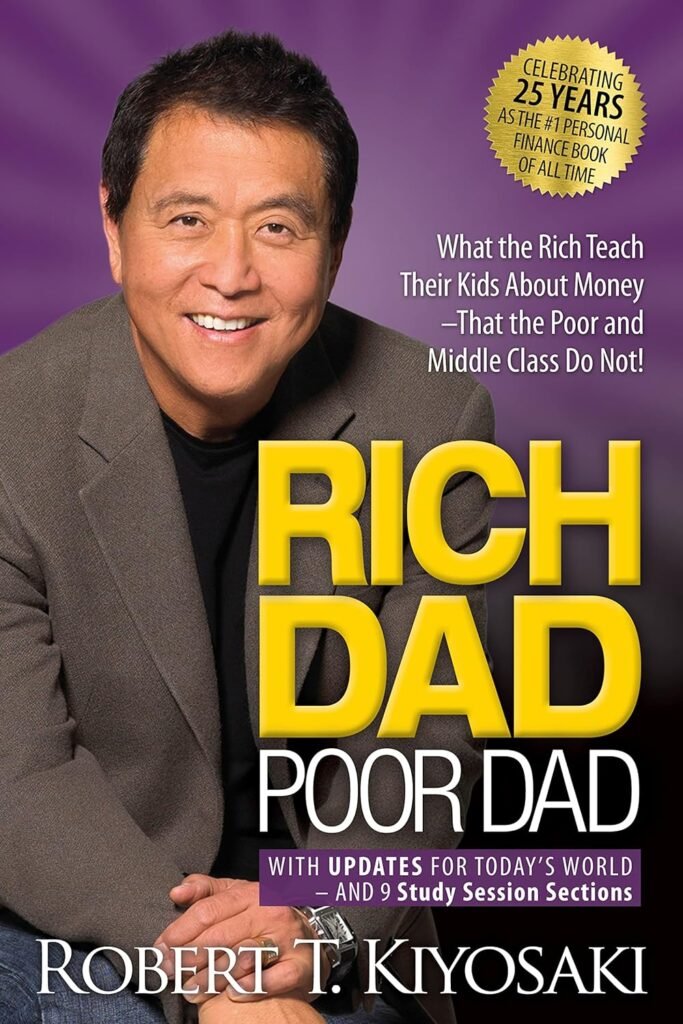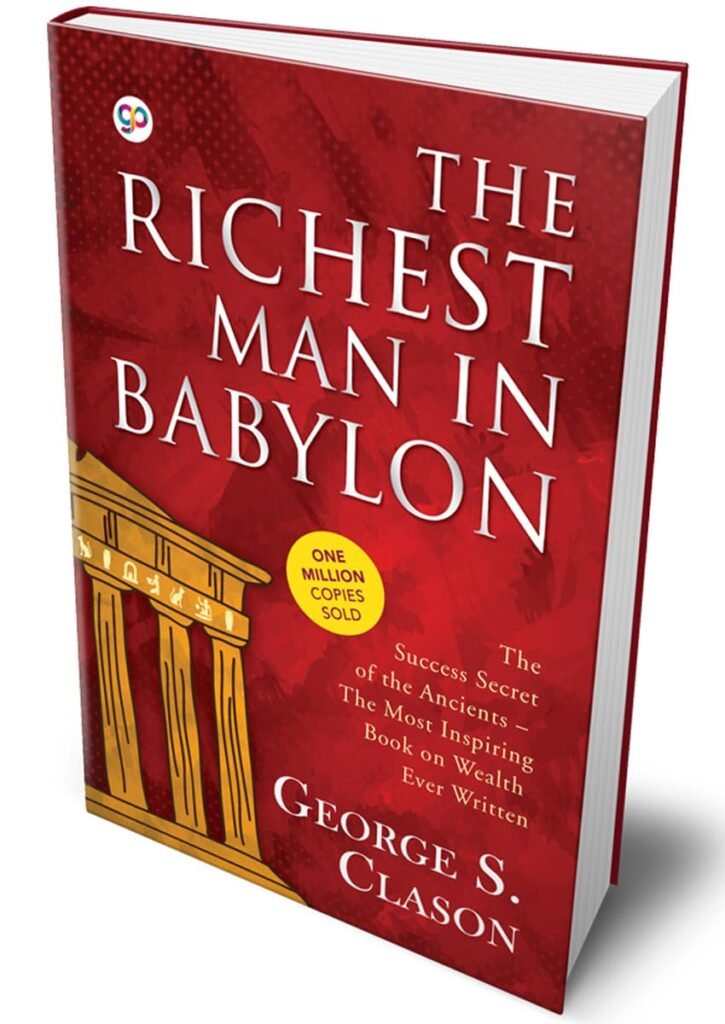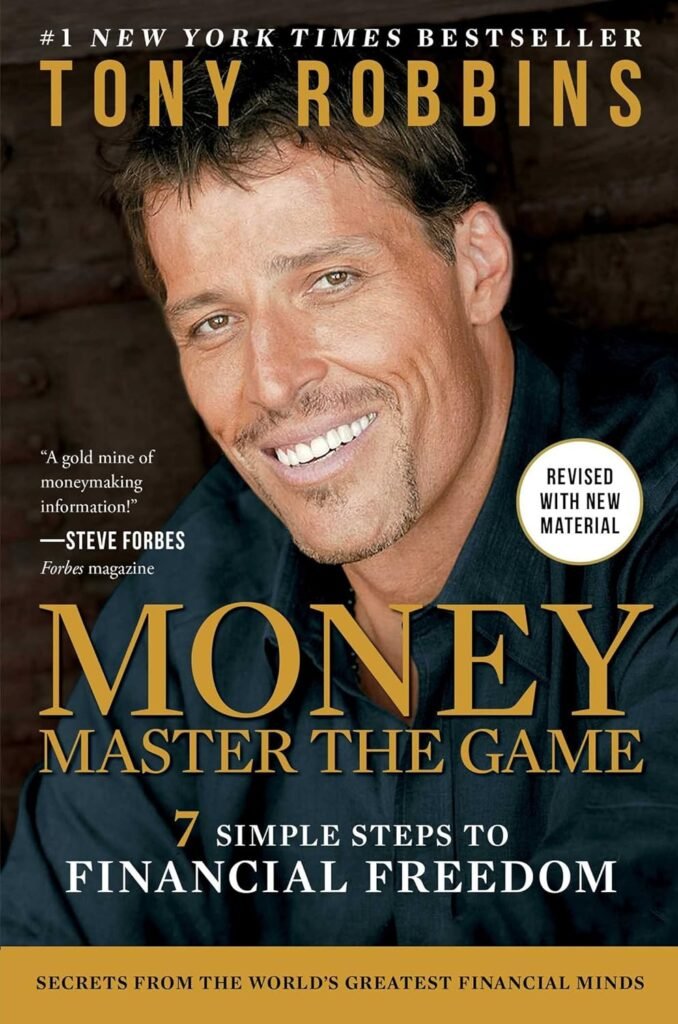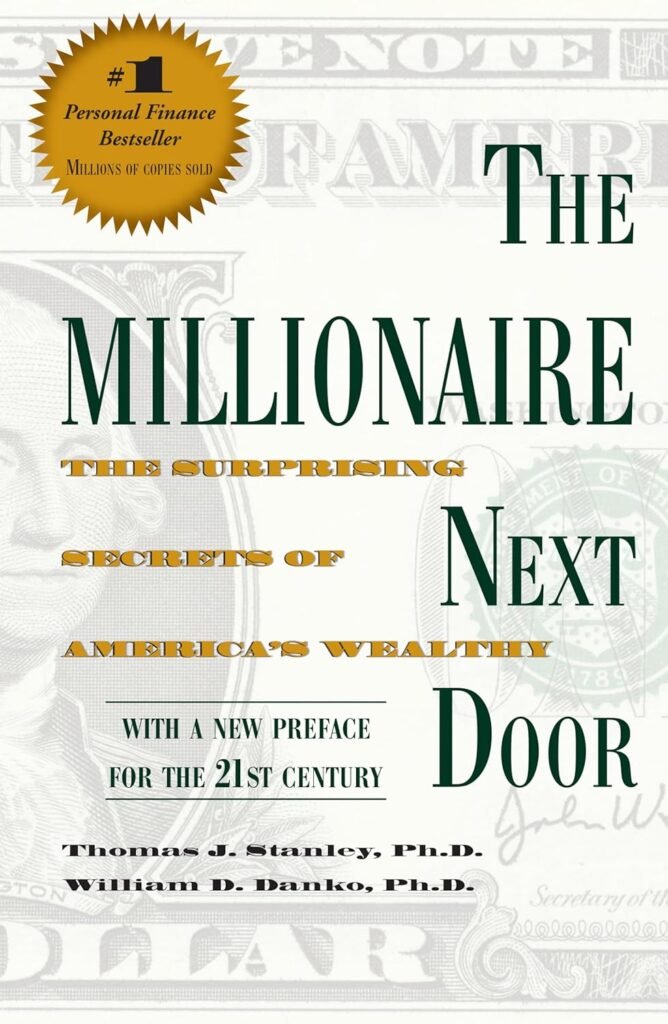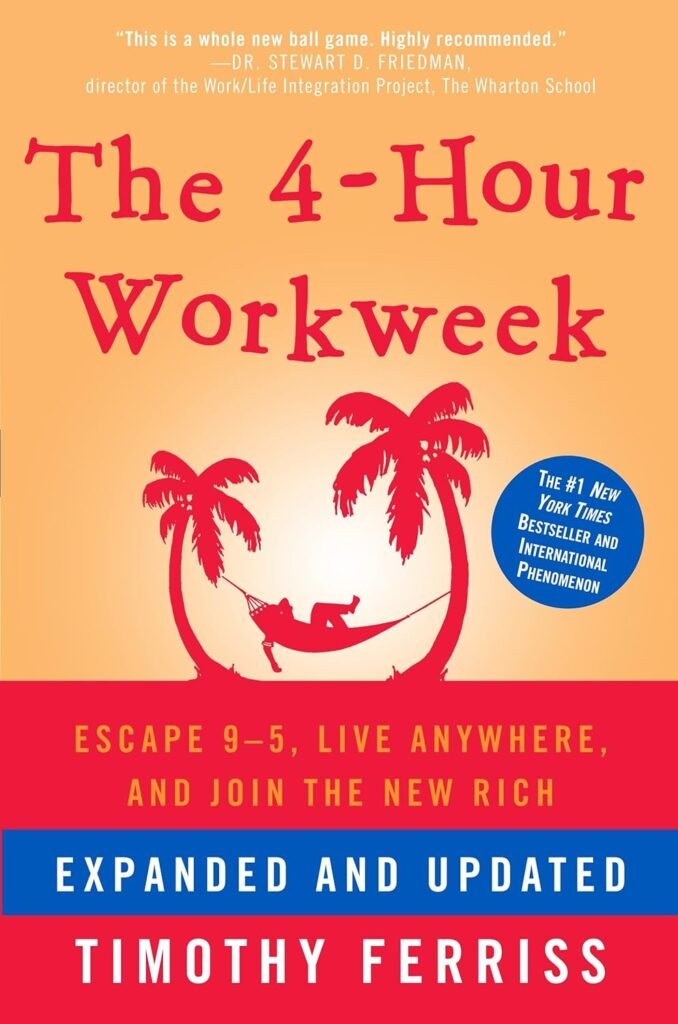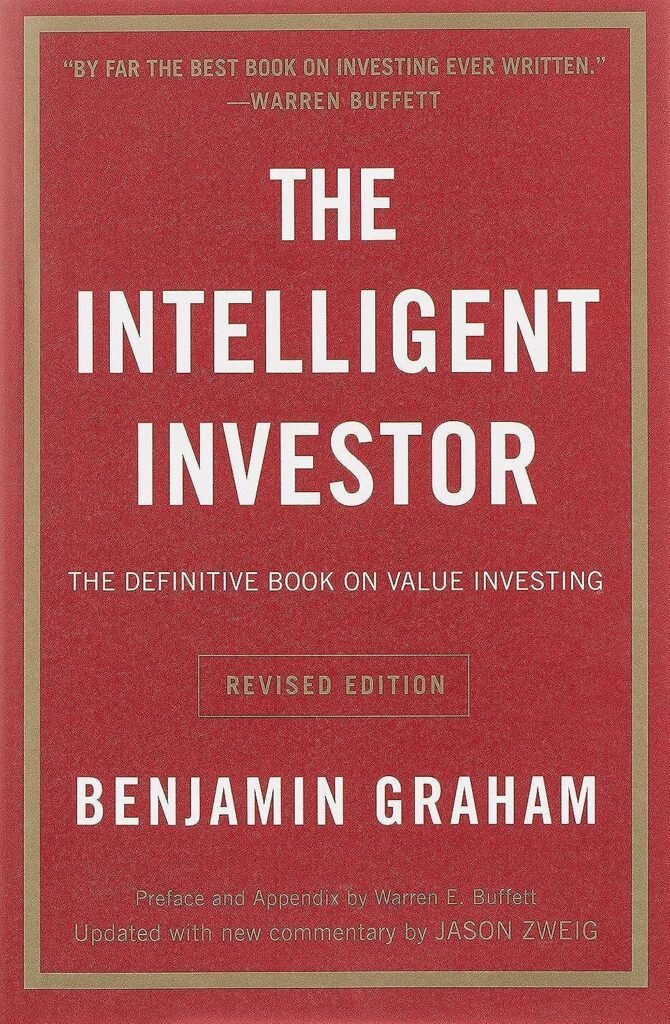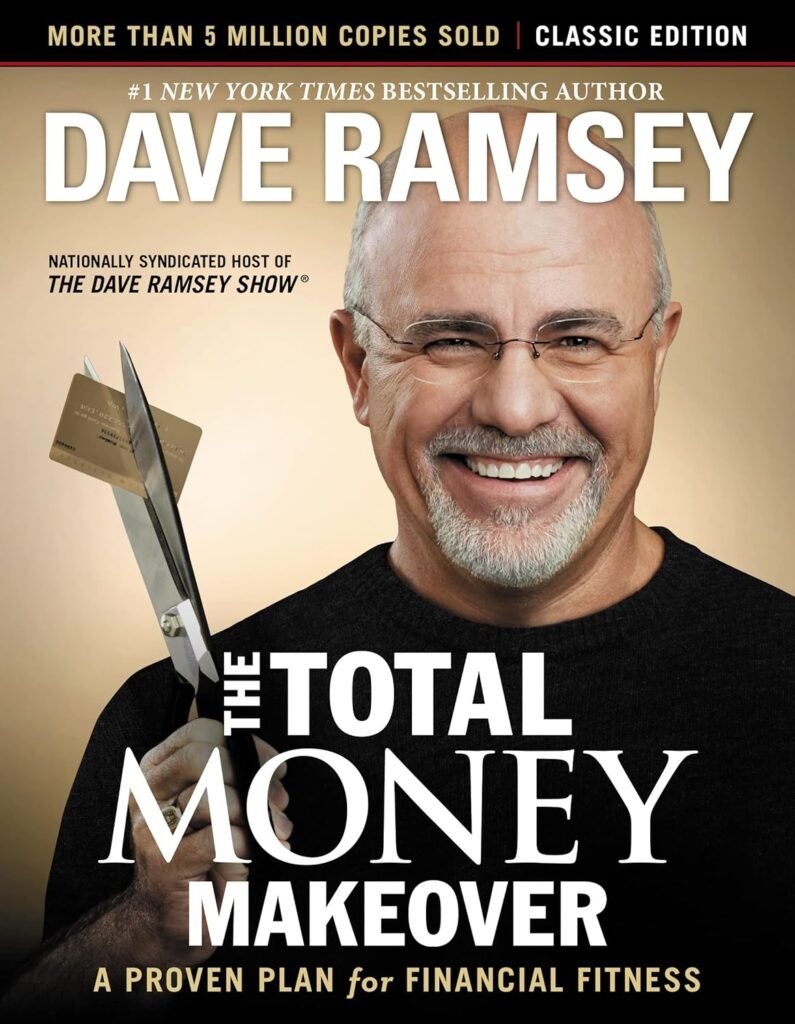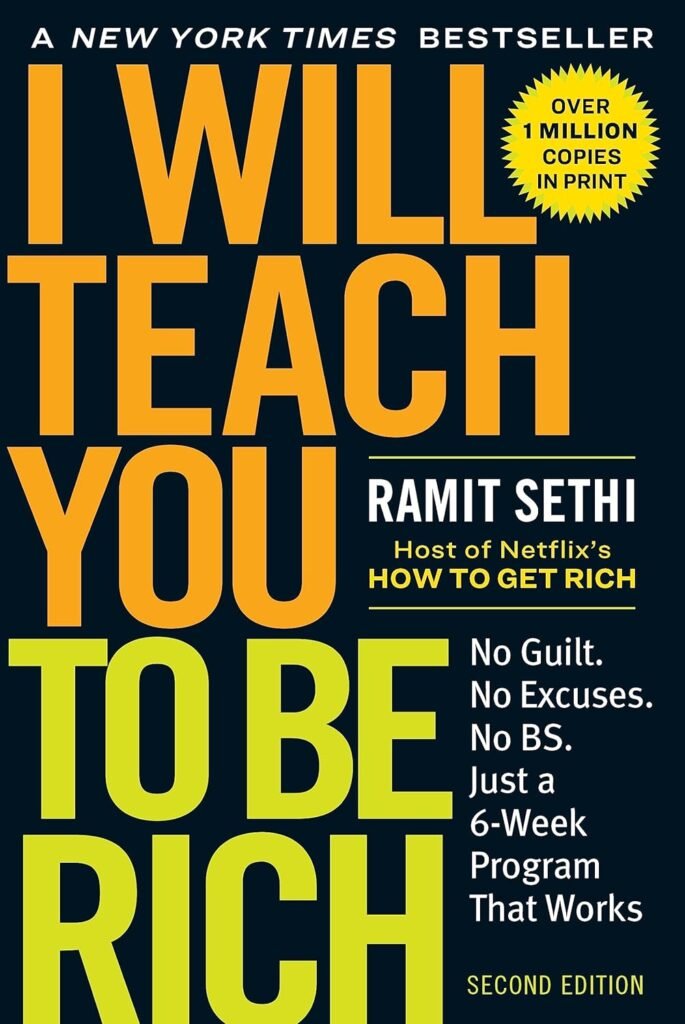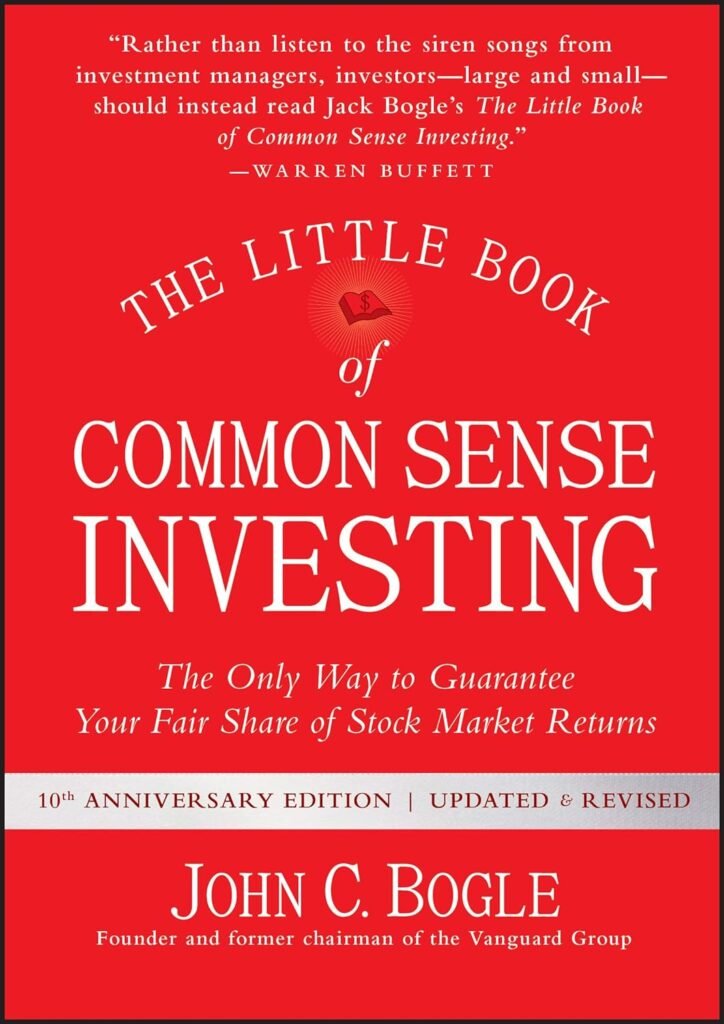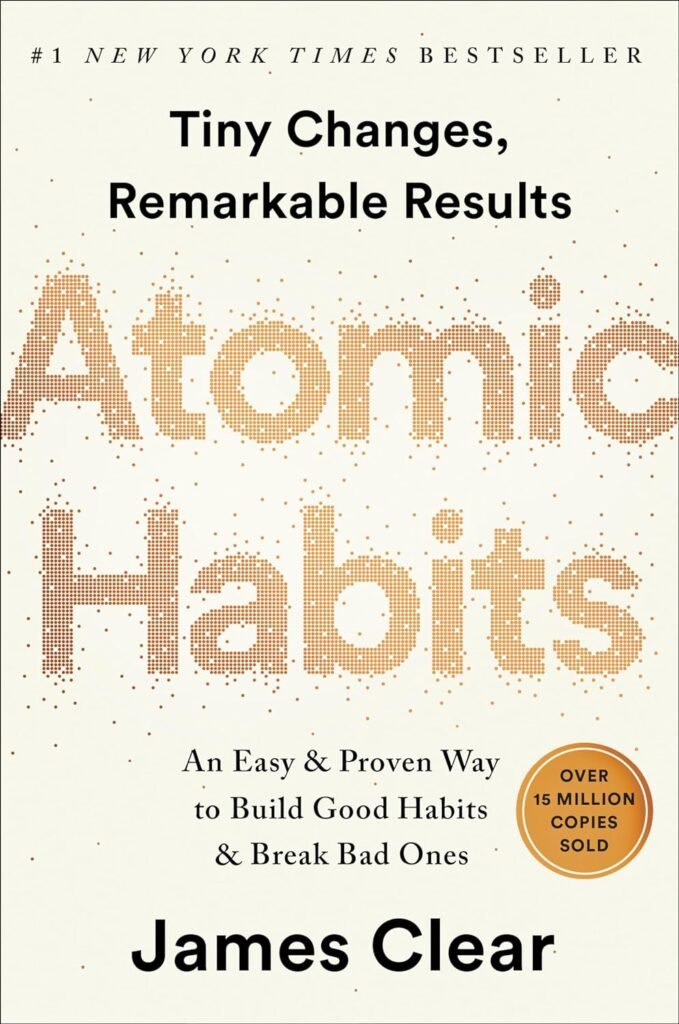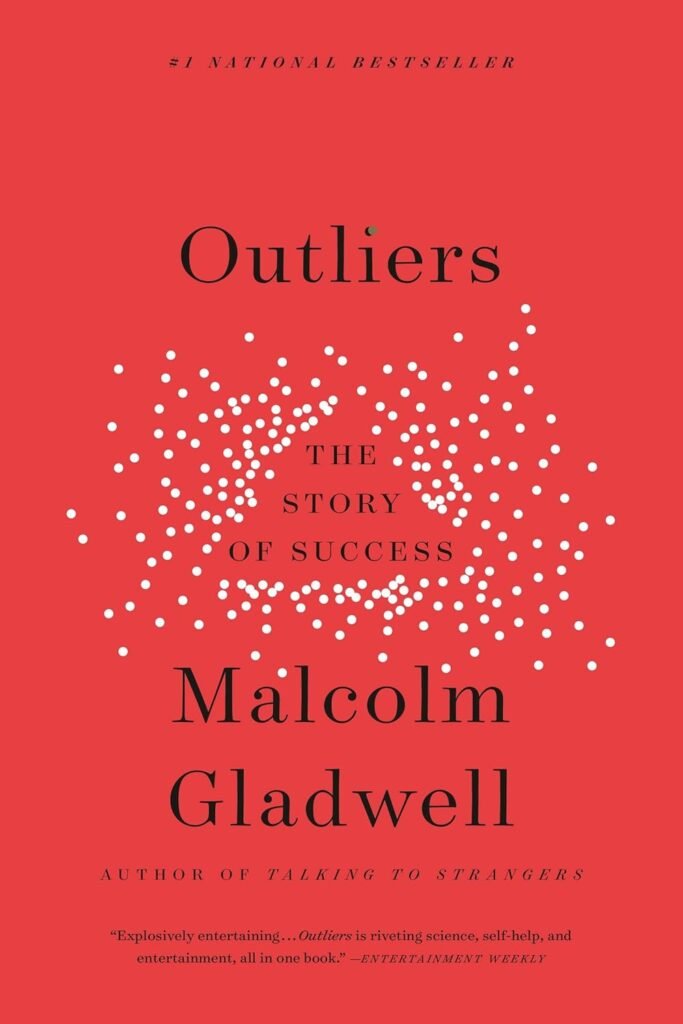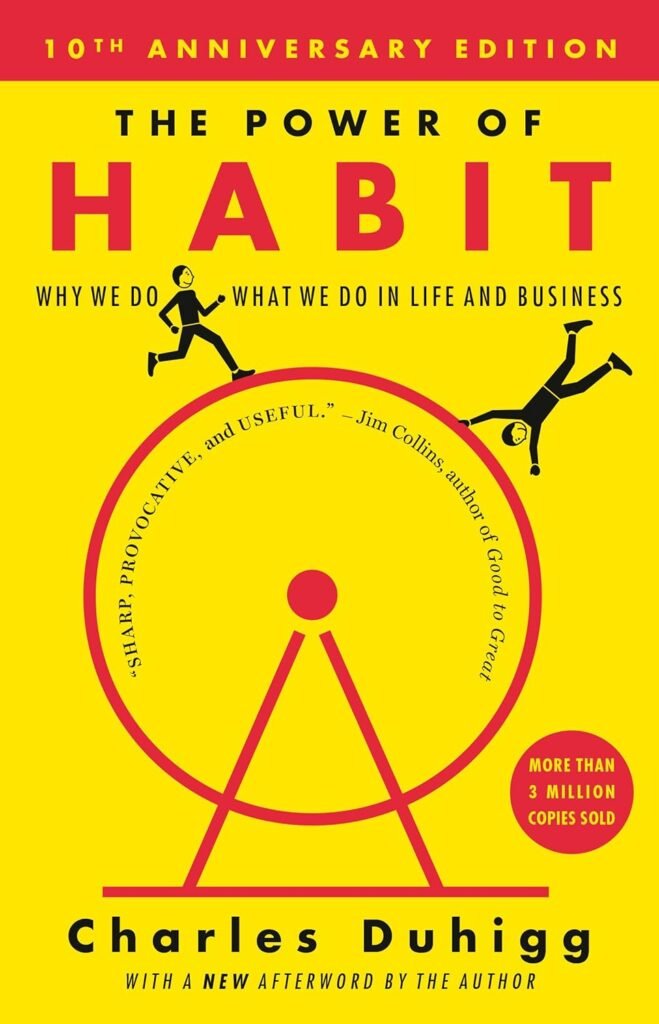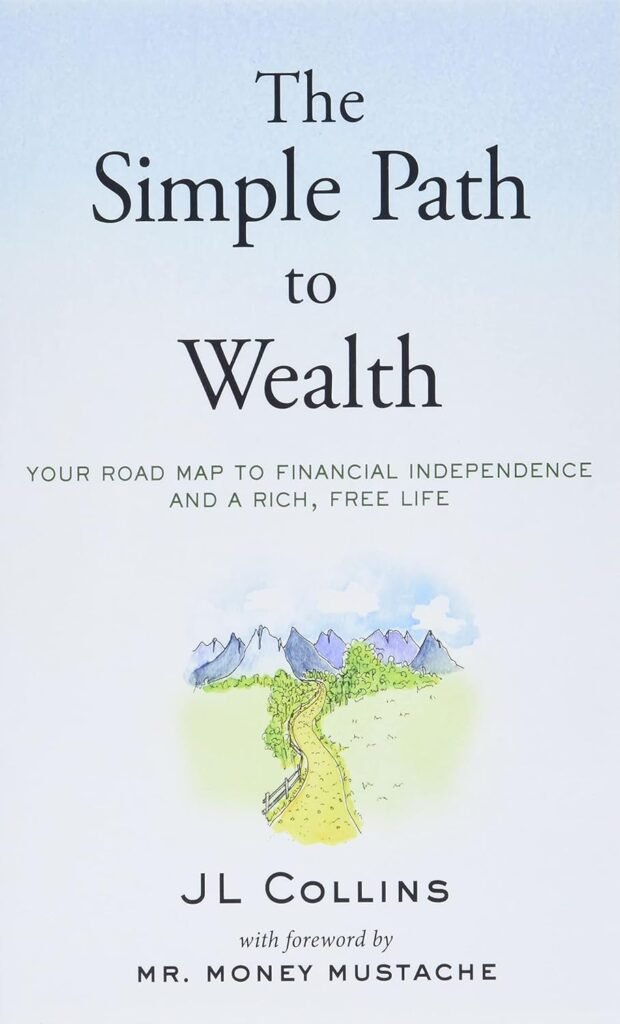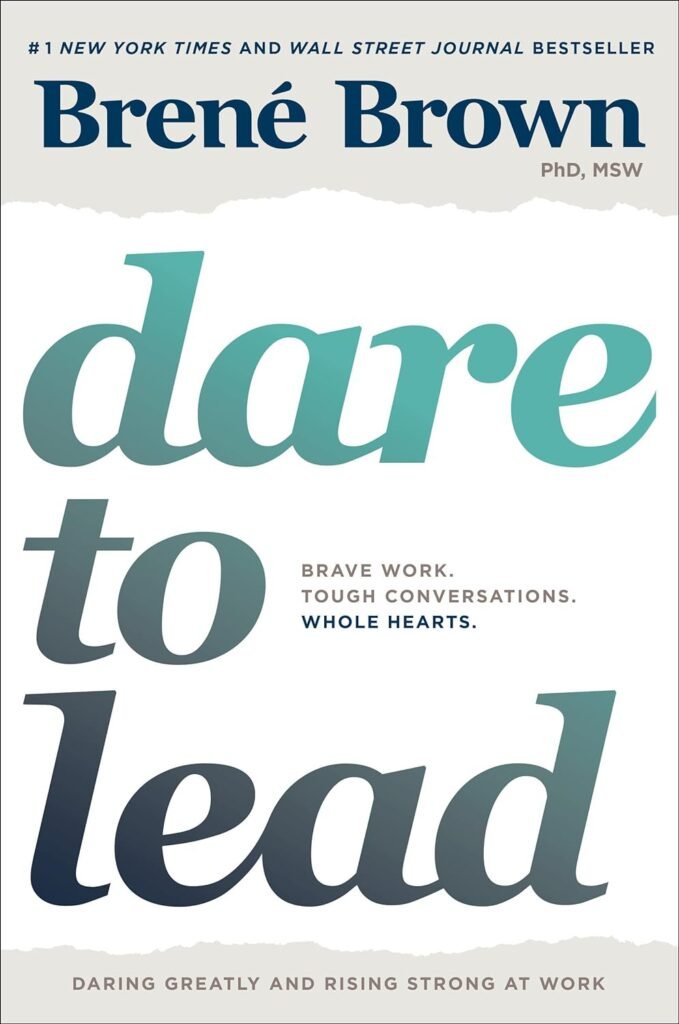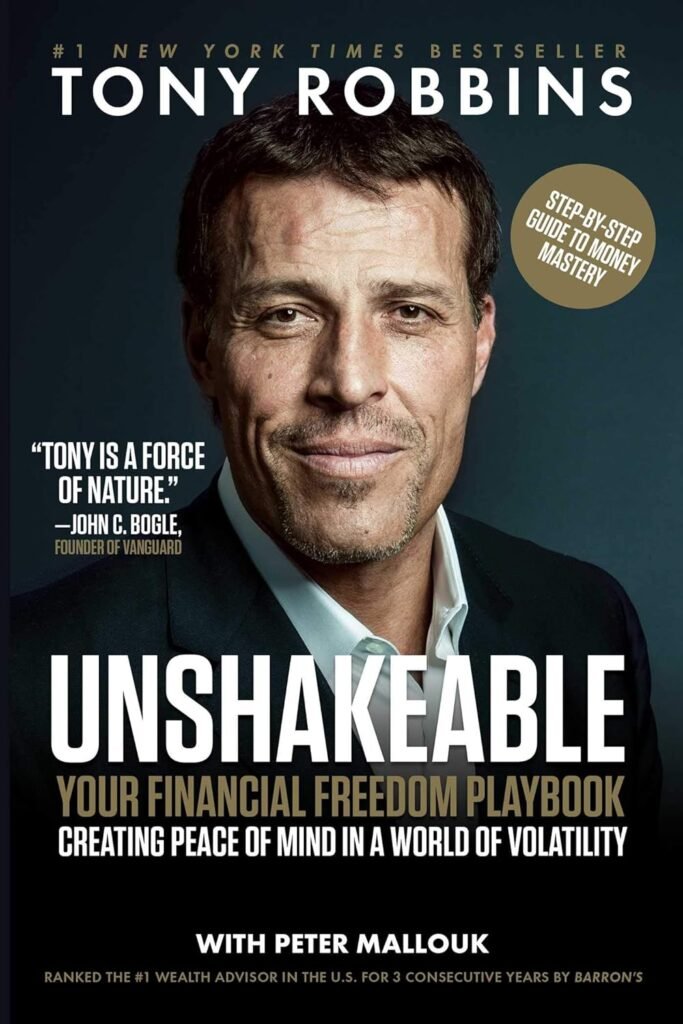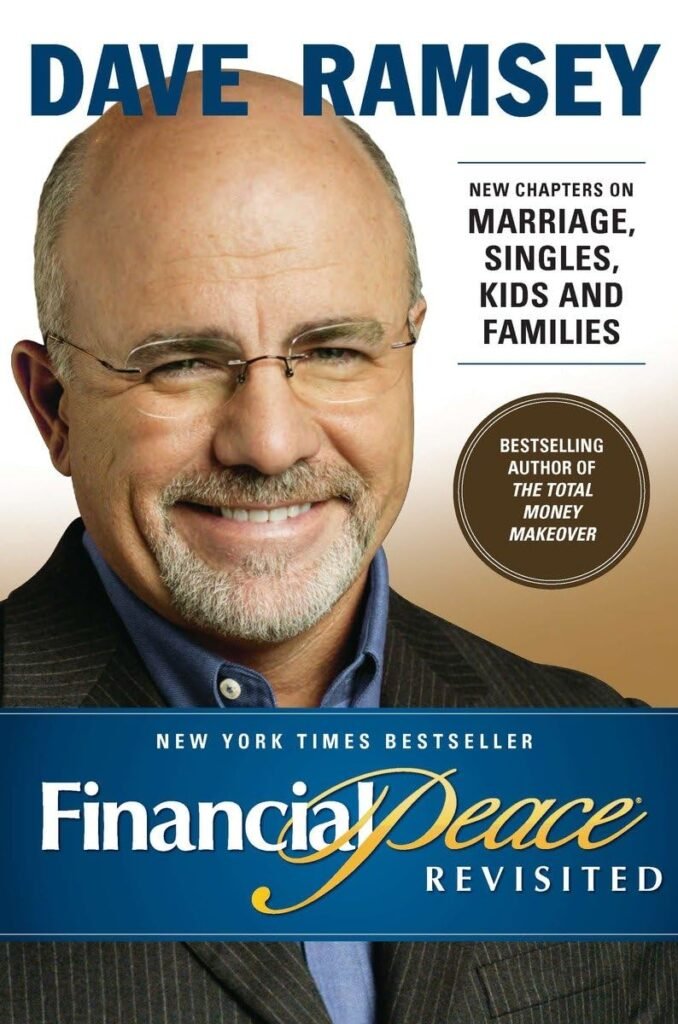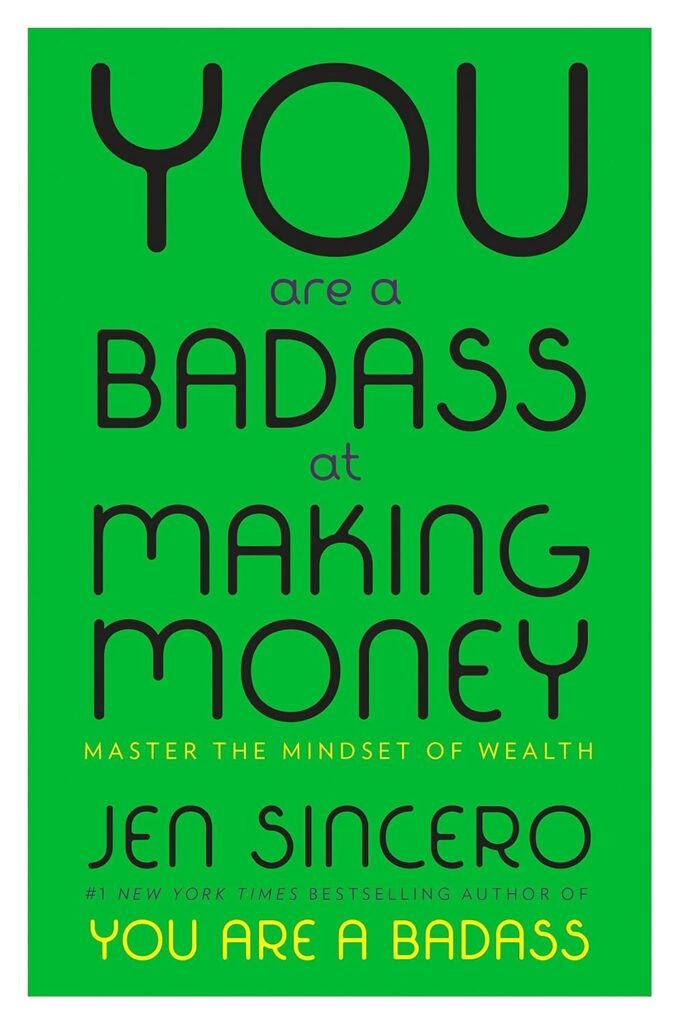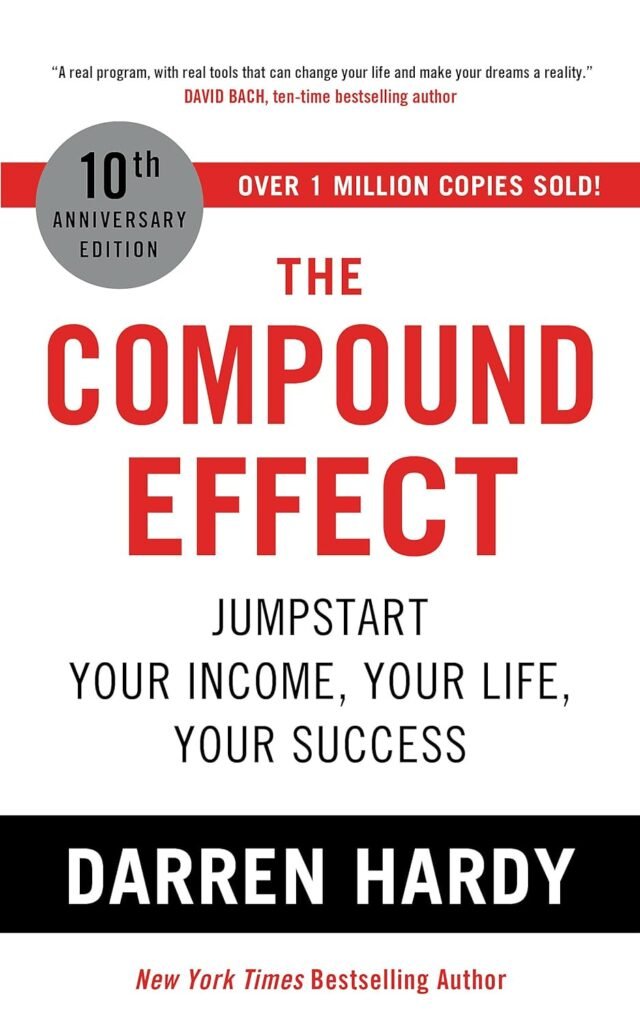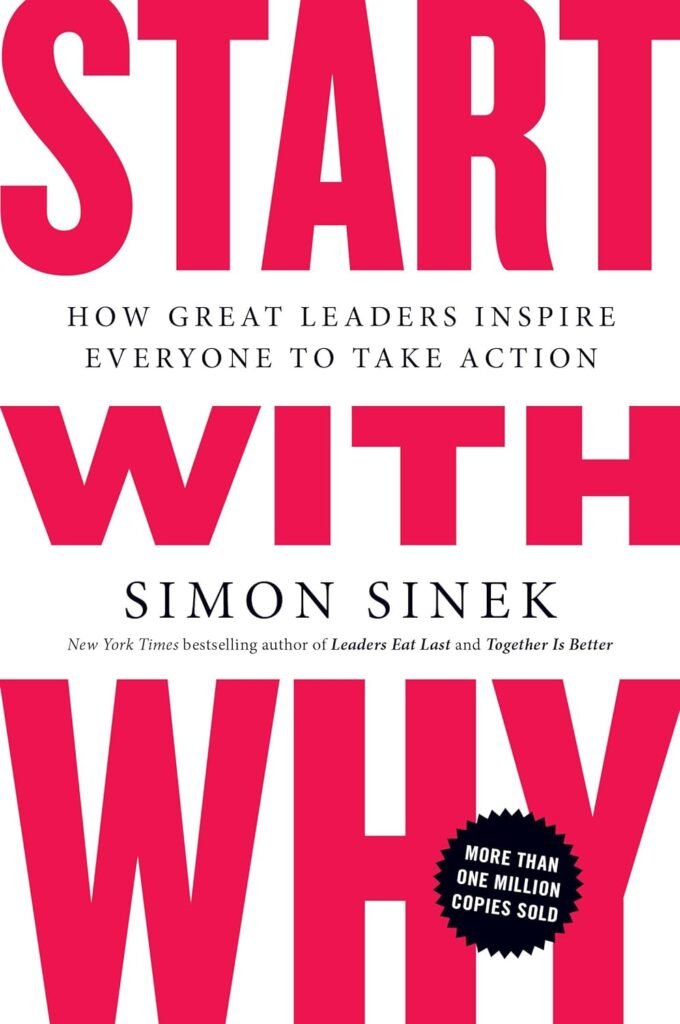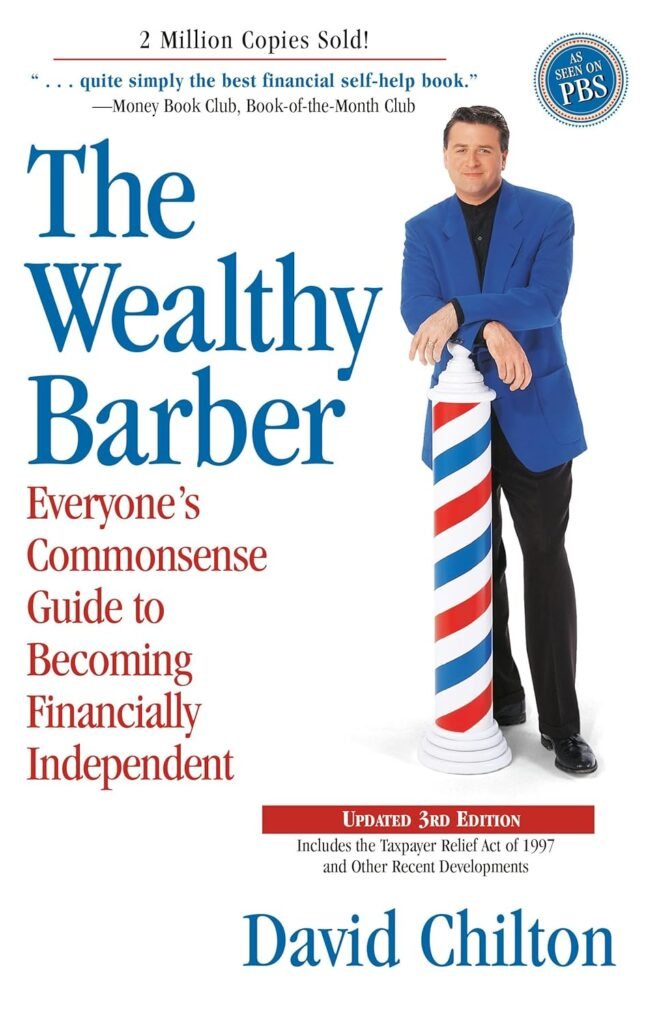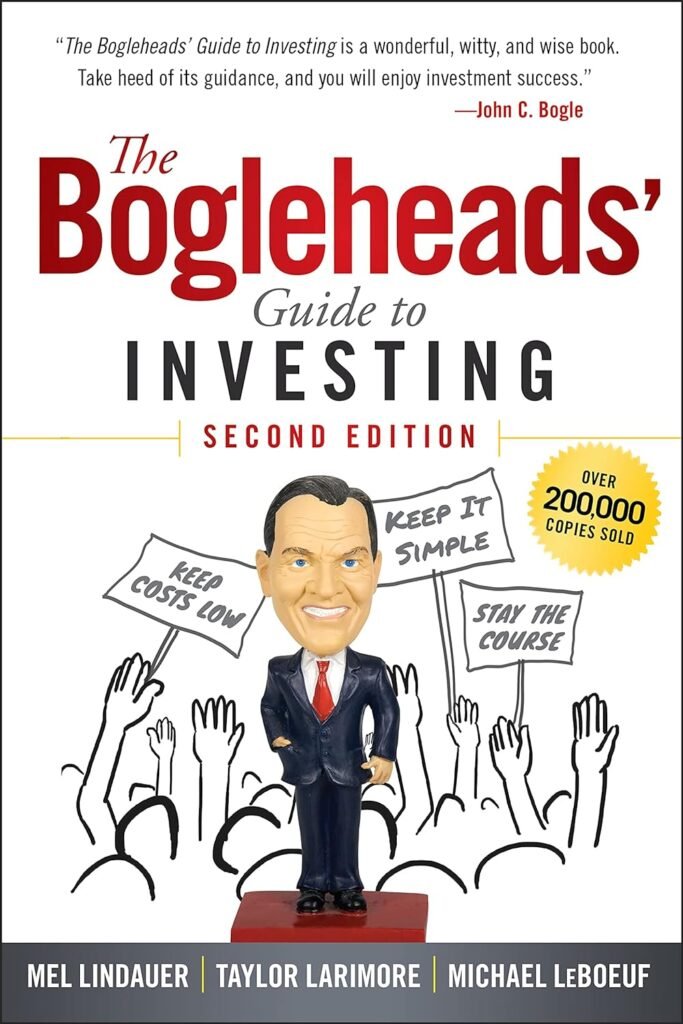1. “Rich Dad Poor Dad” by Robert T. Kiyosaki
“Rich Dad Poor Dad” is a groundbreaking personal finance book by Robert Kiyosaki. It presents a compelling comparison between two distinct financial perspectives: one from his conventional ‘Poor Dad’ who advocated for traditional job security, and the other from his ‘Rich Dad’ who encouraged financial education and investing. Kiyosaki challenges the conventional wisdom about money, emphasizing the importance of understanding how to make money work for you. Through this narrative, the book demystifies complex financial concepts, making it accessible and insightful. It’s a transformative read that encourages a shift from a paycheck-dependent mindset to one of wealth creation and financial independence.
Key Messages:
- Financial Literacy: Emphasizes the importance of understanding financial terms and concepts, encouraging readers to educate themselves about investing, real estate, and building businesses.
- Assets vs. Liabilities: Introduces the concept that wealth is built by acquiring assets, such as investments or rental properties, that generate income, rather than liabilities that cost money.
- The Power of Entrepreneurship: Encourages developing an entrepreneurial mindset to create and seize opportunities for wealth creation, as opposed to solely relying on traditional employment.
2. “The Richest Man in Babylon” by George S. Clason
“The Richest Man in Babylon” by George S. Clason is a timeless classic in the world of personal finance and wealth building. Set in ancient Babylon, the book offers financial wisdom through a series of parables. These stories revolve around Arkad, a poor scribe who becomes the wealthiest man in Babylon. Through Arkad’s journey, Clason imparts essential principles of financial management and wealth accumulation. The book’s enduring popularity stems from its simple yet profound advice, articulated through engaging and easy-to-understand narratives. It’s a foundational read for anyone looking to improve their financial situation, providing practical guidelines that are as relevant today as they were in ancient times.
Key Messages:
- Save Wisely: Emphasizes the importance of saving at least a tenth of your earnings and living within your means.
- Invest Smartly: Advocates for investing your savings wisely and cautiously to ensure a steady income.
- Seek Knowledge: Stresses the value of acquiring financial wisdom and seeking advice from knowledgeable individuals in managing and growing wealth.
3. “Money: Master the Game” by Tony Robbins
“Money: Master the Game” is a comprehensive guide to personal finance and investment by renowned life coach and author Tony Robbins. Drawing from interviews with over 50 financial experts, including legendary investors like Warren Buffett and Ray Dalio, Robbins distills their wisdom into a 7-step blueprint for securing financial freedom. The book covers a wide range of topics, from saving and investing to risk management and retirement planning, making complex financial strategies accessible to the average person. Robbins emphasizes the power of compounding interest, the importance of diversification, and the need to understand one’s own risk tolerance. This book is not just about managing money; it’s about mastering it, offering actionable advice to help readers achieve financial independence and create a life of abundance.
Key Messages:
- The Power of Compound Interest: Illustrates how compounding can grow your investments significantly over time.
- Diversify Your Investments: Stresses the importance of diversifying your portfolio to minimize risk and maximize returns.
- Understand and Manage Risk: Encourages understanding your personal risk tolerance and using that knowledge to inform your investment strategies.
4. “Think and Grow Rich” by Napoleon Hill
“Think and Grow Rich” by Napoleon Hill is a landmark book in the field of personal development and self-help, particularly in the arena of financial success. Based on Hill’s study of many individuals who had amassed personal fortunes, the book distills the philosophy of wealth into 13 principles of personal achievement. These principles, such as desire, faith, and persistence, are designed to guide readers in developing a mindset conducive to financial and personal success. Hill emphasizes the power of personal beliefs and the role they play in achieving one’s goals. The book, more than just about financial richness, is a guide to transforming one’s way of thinking to achieve success in various aspects of life. Its enduring popularity underscores its timeless insights and practical applicability in goal setting and personal growth.
Key Messages:
- The Power of Positive Thinking: Advocates for a mindset focused on positive thinking and visualization to achieve goals.
- Setting and Pursuing Clear Goals: Emphasizes the importance of setting clear, well-defined goals as a roadmap to success.
- Perseverance and Overcoming Obstacles: Stresses the need for persistence and resilience in the face of challenges and failures.
5. “The Millionaire Next Door” by Thomas J. Stanley and William D. Danko
“The Millionaire Next Door” by Thomas J. Stanley and William D. Danko offers a revealing examination of the common traits and behaviors of America’s millionaires. Based on extensive research and surveys, the book debunks the stereotypical image of millionaires and reveals that most are actually self-made, frugal, and meticulous planners. The authors highlight that true wealth is often accumulated not by extravagant living but through disciplined spending, savvy investing, and avoiding consumer debt. The book provides insights into the lifestyle choices and financial strategies that can lead to accumulating significant wealth, emphasizing that being a millionaire is often more about smart financial habits than high income. It’s an eye-opening guide that challenges conventional notions of wealth and provides practical lessons in financial management.
Key Messages:
- Frugality and Discipline: Most millionaires achieve their wealth through frugal living and disciplined spending, rather than high incomes.
- Wealth Accumulation Over Display: Emphasizes accumulating wealth rather than displaying high social status through material possessions.
- Financial Independence and Planning: Highlights the importance of financial planning, investing wisely, and seeking financial independence over showing off wealth.
6. “The 4-Hour Workweek” by Timothy Ferriss
“The 4-Hour Workweek” by Timothy Ferriss is a revolutionary book that challenges conventional work norms and presents an alternative approach to living and working. Ferriss advocates for the concept of ‘lifestyle design’ – creating an ideal balance between work and life that allows for more freedom, mobility, and productivity. The book is divided into four sections, each representing steps to escape the traditional 9-5 work routine: Definition, Elimination, Automation, and Liberation. Ferriss provides practical tips on how to outsource tasks, automate business processes, and use the time and location flexibility to travel or pursue personal passions. The book is not just about working less; it’s about maximizing efficiency in work to enjoy a more fulfilling life. It’s an inspiring read for those looking to break free from the traditional work mold and live life on their own terms.
Key Messages:
- Efficiency Over Hours Worked: Emphasizes the importance of working smarter, not harder, by focusing on efficiency and productivity.
- Outsourcing and Automation: Advocates for outsourcing non-core tasks and automating processes to free up time and focus on high-value activities.
- Lifestyle Design: Encourages readers to design their lifestyle according to their preferences, rather than conforming to the standard work-life structure.
7. “Your Money or Your Life” by Vicki Robin and Joe Dominguez
“Your Money or Your Life” by Vicki Robin and Joe Dominguez is a thought-provoking book that provides a holistic approach to personal finance and living. The book introduces a nine-step program designed to transform your relationship with money, achieve financial independence, and live a more meaningful life. It challenges readers to reconsider their spending habits, understand the true cost of their lifestyle choices in terms of time and life energy, and reevaluate what brings true fulfillment. The authors advocate for a shift from mindless consumption to conscious spending, emphasizing savings, mindful budgeting, and investing. This book is not just about managing money; it’s about aligning your financial practices with your values and life goals, offering a path to financial freedom and a more purposeful life.
Key Messages:
- Life Energy and Money: Encourages readers to understand the concept of ‘life energy’ in relation to money, emphasizing mindful spending.
- Financial Independence: Provides practical steps to achieve financial independence, emphasizing frugality and intelligent investing.
- Aligning Money with Values: Stresses the importance of aligning financial decisions with personal values and life goals for a more fulfilling life.
8. “The Intelligent Investor” by Benjamin Graham
“The Intelligent Investor” by Benjamin Graham, often described as the bible of value investing, is a foundational work in the field of investment. Graham’s philosophy of ‘value investing’ — which shields investors from substantial error and teaches them to develop long-term strategies — has made this book an indispensable resource. The book emphasizes the fundamentals of analyzing stocks, bonds, and mutual funds, and insists on the importance of adopting a disciplined investment approach. Graham’s core principles, such as the concept of ‘Mr. Market,’ highlight the psychological aspects of investing and the need for a consistent strategy. His distinction between investing and speculating is particularly notable, as is his focus on investor psychology and temperance. “The Intelligent Investor” is more than just a book on investments; it’s a roadmap to financial security that has stood the test of time.
Key Messages:
- Value Investing: Advocates for a value investing approach focused on long-term, sustainable investments rather than short-term gains.
- Market Fluctuations: Emphasizes the importance of remaining disciplined and not reacting impulsively to market fluctuations.
- Investor Psychology: Stresses the significance of understanding one’s own investor psychology and making decisions based on thorough analysis rather than market trends or sentiments.
9. “The Total Money Makeover” by Dave Ramsey
“The Total Money Makeover” by Dave Ramsey is a straightforward, no-nonsense guide to personal finance and debt management. Ramsey, known for his tough-love approach, lays out a practical, step-by-step plan to achieve financial fitness. The book revolves around his seven “Baby Steps,” which guide readers through the process of paying off debt, building an emergency fund, investing for retirement, and ultimately achieving financial independence. Ramsey debunks common money myths and replaces them with sound financial principles, such as the importance of budgeting, living within one’s means, and avoiding debt. His emphasis on personal responsibility and behavioral change in finance makes this book an empowering read for anyone looking to take control of their financial future.
Key Messages:
- Debt Snowball Method: Introduces the debt snowball method for paying off debt – prioritizing smaller debts first for quick wins and psychological motivation.
- Building an Emergency Fund: Stresses the importance of establishing an emergency fund as a buffer against unforeseen expenses.
- Living Within Means: Advocates for a lifestyle of living within one’s means, avoiding debt, and making intentional financial choices based on a well-planned budget.
10. “I Will Teach You to Be Rich” by Ramit Sethi
“I Will Teach You to Be Rich” by Ramit Sethi is a personal finance book tailored for the modern age, focusing on how to make your money work for you. Sethi, combining a conversational tone with practical advice, aims to demystify complex financial concepts for a younger audience. The book lays out a six-week program covering banking, saving, budgeting, investing, and even touches on the psychological barriers to wealth accumulation. Unlike traditional personal finance books that often preach cutting back on small pleasures, Sethi advocates for a more balanced approach, emphasizing smart spending, automating finances, and investing in high-return opportunities. The book’s approach is about enjoying life now while building a secure financial future.
Key Messages:
- Automate Your Finances: Highlights the importance of automating savings and investments to effortlessly grow wealth.
- Conscious Spending: Encourages a spending plan that focuses on prioritizing personal value and happiness, rather than merely cutting costs.
- Invest in High-Return Opportunities: Stresses the need for early and smart investing, particularly in low-cost, high-return investment vehicles like index funds.
11. “Principles: Life and Work” by Ray Dalio
In “Principles: Life and Work” by Ray Dalio, founder of Bridgewater Associates, one of the world’s largest hedge funds, shares the guiding principles that have led to his and his company’s success. This book is divided into two parts: the first focuses on Dalio’s personal life principles, while the second delves into his unorthodox management principles. Dalio emphasizes the power of objective decision-making, radical transparency, and idea meritocracy in both life and business. The book is a blend of practical advice and philosophical insights, providing a framework for making decisions, approaching challenges, and building strong teams. Dalio’s candidness about his own successes and failures makes this book a compelling read for anyone interested in the principles behind making effective choices in life and work.
Key Messages:
- Embrace Reality and Deal with It: Advocates for facing reality head-on and making decisions based on a deep understanding of it.
- The Power of Radical Transparency: Emphasizes creating an environment where people can speak openly and mistakes can be learned from.
- Idea Meritocracy: Encourages the cultivation of idea meritocracy in organizations, where the best ideas win out regardless of who presents them.
12. “The Little Book of Common Sense Investing” by John C. Bogle
“The Little Book of Common Sense Investing” by John C. Bogle, the founder of The Vanguard Group, is a compelling guide to the fundamentals of low-cost, long-term investing. Bogle champions the value of index fund investing as a strategy that allows investors to capture market returns in a cost-effective way. The book critiques the pitfalls of actively managed funds and the challenges of beating the market through speculative strategies. Bogle’s advice is rooted in the belief that simplicity and minimalism in investment choices lead to greater long-term success. He emphasizes the importance of compounding returns and the detrimental impact of high fees on investment portfolios. This book is a clarion call for investors to focus on simplicity, clarity, and long-term thinking in their investment strategies.
Key Messages:
- Advantages of Index Funds: Advocates for the use of index funds as a straightforward, low-cost way to invest in the broad market.
- Cost Matters: Emphasizes the significant impact of costs on investment returns, advocating for low-fee investment options.
- Stay the Course: Stresses the importance of a long-term investment perspective, avoiding the pitfalls of frequent trading and market timing.
13. “Atomic Habits” by James Clear
“Atomic Habits” by James Clear offers a comprehensive and practical guide on how small changes can lead to remarkable results in habit formation and improvement. Clear presents an accessible and proven framework for everyday behavior change with a focus on tiny changes that compound into significant transformations over time. The book delves into the psychology behind habits, explaining how they work and how they can be systematically altered to one’s advantage. Clear emphasizes the importance of establishing systems and routines that lead to successful habits, rather than relying solely on goals or motivation. He illustrates his points with compelling stories and real-life examples, making the book both engaging and highly practical. “Atomic Habits” provides readers with effective strategies to build good habits, break bad ones, and master the tiny behaviors that lead to remarkable results.
Key Messages:
- The Compound Effect of Small Habits: Highlights how small, consistent actions can lead to significant life changes.
- Focus on Systems, Not Goals: Stresses the importance of establishing effective systems and routines over merely setting goals.
- The Four Laws of Behavior Change: Introduces a simple set of rules for building good habits and breaking bad ones: Make it obvious, make it attractive, make it easy, and make it satisfying.
14. “Outliers: The Story of Success” by Malcolm Gladwell
“Outliers: The Story of Success” by Malcolm Gladwell is a thought-provoking exploration of what makes high-achievers different. Gladwell challenges the traditional notions of success and delves into how external factors like culture, birthplace, and even birthdate can influence an individual’s likelihood of success. Through a series of engaging and insightful stories, from the Beatles to Bill Gates, Gladwell demonstrates that while individual talent and sheer hard work are important, they are often accompanied by a series of fortunate circumstances and opportunities. “Outliers” encourages readers to look beyond the simplistic formula of success being solely the result of personal effort, emphasizing the role of history and community in shaping the lives of extraordinary individuals. This book reshapes our understanding of the pathways to success and the complexities surrounding it.
Key Messages:
- The 10,000-Hour Rule: Suggests that mastery in any skill area requires approximately 10,000 hours of practice.
- The Importance of Timing and Circumstance: Examines how success often depends on when and where one grows up, highlighting the role of timing and external circumstances.
- Redefining Success: Challenges the reader to reconsider traditional metrics and narratives of success, recognizing the complex interplay of individual effort, opportunity, and cultural background.
15. “The Power of Habit” by Charles Duhigg
In “The Power of Habit”, Charles Duhigg delves into the science behind why habits exist and how they can be transformed. The book offers an in-depth look at the habit loop — a three-step process that includes the cue, the routine, and the reward — and how understanding and leveraging this loop can lead to significant changes in personal and organizational habits. Duhigg combines the latest research in psychology, neuroscience, and behavioral economics with engaging narratives, ranging from the boardrooms of Procter & Gamble to the sidelines of the NFL to the civil rights movement. His compelling storytelling illustrates how habits work and how they can be changed, providing the reader with practical insights to apply these principles in various aspects of life.
Key Messages:
- The Habit Loop: Introduces the concept of the habit loop (cue, routine, reward) and its role in forming and maintaining habits.
- Small Changes, Big Impact: Emphasizes that small shifts in habits can lead to significant transformations in personal and professional lives.
- Willpower and Keystone Habits: Discusses the importance of willpower and identifies ‘keystone habits’ that can trigger widespread change.
16. “The Simple Path to Wealth” by J L Collins
“The Simple Path to Wealth” by J L Collins offers a straightforward and accessible approach to investing and personal finance. Initially written as a series of letters to his daughter, Collins lays out clear and concise advice on how to achieve financial independence and retire early. The book demystifies complex financial concepts and presents a simple strategy focused on low-cost index fund investing, the power of compounding, and the importance of living below one’s means. Collins advocates for a hands-off approach to investing, encouraging readers to focus on long-term gains rather than short-term market fluctuations. His practical advice is complemented by a deep understanding of the psychology of money, making this book an essential read for anyone looking to build wealth and secure their financial future with minimal stress and complexity.
Key Messages:
- Invest in Low-Cost Index Funds: Stresses the benefits of investing in low-cost index funds as a simple and effective way to grow wealth over time.
- The Power of Compounding: Highlights the significant impact of compounding interest on investments and the importance of starting early.
- Live Below Your Means: Advocates for the importance of spending less than you earn and saving diligently to achieve financial freedom.
17. “Dare to Lead: Brave Work. Tough Conversations. Whole Hearts.” by Brené Brown
“Dare to Lead” by Brené Brown is a compelling exploration of leadership in the modern workplace, advocating for courage, vulnerability, and empathy as essential qualities of effective leaders. Drawing on her extensive research on emotions and human connections, Brown dismantles the myth that vulnerability is a weakness in leadership. Instead, she posits that it is the most accurate measure of courage and the birthplace of innovation, creativity, and change. The book offers practical tools and strategies to help leaders cultivate these qualities within themselves and their teams. It emphasizes the importance of tough conversations, leading with empathy, and connecting deeply with team members. “Dare to Lead” is a transformative guide for anyone in a leadership role, aiming to create a culture of bravery and daring greatly.
Key Messages:
- Embrace Vulnerability: Encourages leaders to embrace vulnerability as a strength, allowing for more authentic and effective leadership.
- Courageous Conversations: Stresses the importance of engaging in open, honest conversations, even when they are difficult or uncomfortable.
- Leading with Empathy: Highlights the significance of empathy in leadership, fostering trust, and strong connections within teams.
18. “Unshakeable: Your Financial Freedom Playbook” by Tony Robbins
“Unshakeable: Your Financial Freedom Playbook” by Tony Robbins is a guide designed to provide readers with strategies to achieve financial security and freedom. In this book, Robbins teams up with financial advisor Peter Mallouk to offer insights into navigating the complex world of investing, aiming to make the reader financially ‘unshakeable’. The book demystifies the investment process and provides practical advice on how to create a simple, effective investment plan. It covers a range of topics, including how to manage financial fears, minimize fees and taxes, and build a diversified portfolio. Robbins emphasizes the psychological aspects of investing, teaching readers how to maintain a calm and disciplined approach during market volatility. “Unshakeable” is a resource for anyone looking to build wealth and experience greater financial freedom.
Key Messages:
- Overcoming Investment Fears: Teaches how to handle market volatility and make informed decisions without fear.
- Effective Financial Planning: Offers strategies for creating a robust financial plan, focusing on long-term investment and diversification.
- Minimizing Fees and Taxes: Provides guidance on reducing the impact of fees and taxes to maximize investment returns.
19. “Financial Peace Revisited” by Dave Ramsey
“Financial Peace Revisited” by Dave Ramsey is a comprehensive guide to achieving financial stability and peace. This book revisits and expands on the principles outlined in Ramsey’s earlier work, offering practical advice on budgeting, reducing debt, and building wealth. Ramsey’s approach is straightforward and grounded in common-sense principles; he emphasizes the importance of disciplined spending, the use of cash over credit, and the power of the “debt snowball” method for eliminating debt. The book also addresses the emotional and psychological aspects of money management, encouraging readers to change their attitudes and behaviors around money. With relatable examples and simple strategies, “Financial Peace Revisited” is a valuable resource for anyone looking to take control of their financial life and experience the freedom and peace that come with being financially secure.
Key Messages:
- Debt-Free Living: Advocates for a lifestyle free of debt, emphasizing the benefits of paying off debts and living within one’s means.
- Budgeting and Saving: Highlights the importance of budgeting as a tool for managing finances and the necessity of building an emergency fund.
- The ‘Debt Snowball’ Method: Introduces the ‘debt snowball’ method, a strategy for paying off debts by starting with the smallest and working up to the largest.
20. “You Are a Badass at Making Money: Master the Mindset of Wealth” by Jen Sincero
In “You Are a Badass at Making Money: Master the Mindset of Wealth,” Jen Sincero offers a refreshingly frank and entertaining approach to financial empowerment. This book is more than just a guide to making money; it’s a call to transform your relationship with money and challenge deep-seated beliefs that hinder financial success. Sincero combines personal anecdotes with practical advice, inspiring readers to take bold steps towards their financial goals. The book focuses on the importance of mindset in wealth creation, urging readers to adopt a positive and proactive attitude towards money. Sincero’s humorous and no-nonsense style makes complex financial concepts relatable and approachable, encouraging readers to unlock their earning potential and live a richer life.
Key Messages:
- Transform Your Money Mindset: Encourages a shift in mindset from limiting beliefs about money to a more positive and abundance-oriented perspective.
- Take Bold Financial Actions: Motivates readers to overcome fears and take decisive steps towards financial growth and independence.
- The Power of Positive Thinking: Highlights how a positive outlook can open up opportunities for wealth creation and financial success.
21. “The Compound Effect” by Darren Hardy
“The Compound Effect” by Darren Hardy is a motivational book that explores the principle of compound interest in the realm of personal development and success. Hardy, the former publisher of SUCCESS magazine, emphasizes that small, consistent actions can lead to significant and transformative results over time. The book’s core message is that choices, behaviors, and habits, however small they might seem, can compound over time to create major differences in one’s life. Hardy offers practical advice and real-life examples to illustrate how making incremental changes can yield enormous returns in the long run. The book is a call to action to make positive changes, stay consistent, and harness the power of the compound effect in achieving personal and professional goals.
Key Messages:
- Small Actions, Big Results: Highlights the impact of small, consistent actions and choices on long-term success.
- The Power of Habits: Stresses the importance of cultivating positive habits and the transformative effect they can have over time.
- Consistency and Perseverance: Encourages maintaining consistency and perseverance, emphasizing that success is often a slow and gradual process.
22. “Start with Why: How Great Leaders Inspire Everyone to Take Action” by Simon Sinek
In “Start with Why: How Great Leaders Inspire Everyone to Take Action,” Simon Sinek explores the fundamental question at the heart of personal and organizational success: Why? Sinek argues that understanding the ‘why’ behind your actions and what drives your organization is crucial for inspiring leadership and sustainable success. He introduces the concept of the Golden Circle, explaining how leaders can inspire action by communicating their purpose (the ‘Why’), then how they do it (the ‘How’), and finally what they do (the ‘What’). Using examples from Apple, Martin Luther King Jr., and the Wright brothers, Sinek demonstrates that starting with ‘Why’ aligns teams, motivates action, and builds a loyal customer and employee base. This book offers a powerful perspective on leadership, motivation, and communication, making it essential reading for anyone who wants to inspire others or understand the power of purpose-driven leadership.
Key Messages:
- The Importance of ‘Why’: Emphasizes the need to understand and communicate the underlying purpose and belief behind actions and organizations.
- The Golden Circle Framework: Introduces the Golden Circle (Why, How, What) as a way to structure thinking and communication for maximum impact.
- Inspiring Leadership: Highlights that leaders who articulate their ‘Why’ effectively inspire loyalty and action, both internally within teams and externally among customers.
23. “The Wealthy Barber” by David Chilton
“The Wealthy Barber” by David Chilton is a unique and engaging personal finance book that imparts wisdom through a fictional narrative. The story revolves around three people who visit a barber, Roy, who is surprisingly wealthy due to his savvy financial planning and investing. Through their monthly meetings, Roy shares his insights on a range of financial topics including saving, investing, insurance, home buying, and retirement planning, all in a conversational and accessible manner. Unlike typical finance books that can be technical and dry, Chilton uses the storytelling format to simplify complex financial concepts and make them relatable and understandable for the average reader. This book is ideal for those who are just beginning to navigate their financial journey and are looking for practical, straightforward advice in a format that is both enjoyable and educational.
Key Messages:
- The Importance of Saving: Stresses the need to start saving a portion of your income regularly, regardless of the amount.
- Investing for the Future: Provides insights into the basics of investing and the importance of starting early to take advantage of compound interest.
- Living Within Your Means: Advocates for responsible spending and avoiding unnecessary debt to achieve long-term financial stability.
24. “The Bogleheads’ Guide to Investing” by Taylor Larimore, Mel Lindauer, and Michael LeBoeuf
“The Wealthy Barber” by David Chilton is a unique and engaging personal finance book that imparts wisdom through a fictional narrative. The story revolves around three people who visit a barber, Roy, who is surprisingly wealthy due to his savvy financial planning and investing. Through their monthly meetings, Roy shares his insights on a range of financial topics including saving, investing, insurance, home buying, and retirement planning, all in a conversational and accessible manner. Unlike typical finance books that can be technical and dry, Chilton uses the storytelling format to simplify complex financial concepts and make them relatable and understandable for the average reader. This book is ideal for those who are just beginning to navigate their financial journey and are looking for practical, straightforward advice in a format that is both enjoyable and educational.
Key Messages:
- The Importance of Saving: Stresses the need to start saving a portion of your income regularly, regardless of the amount.
- Investing for the Future: Provides insights into the basics of investing and the importance of starting early to take advantage of compound interest.
- Living Within Your Means: Advocates for responsible spending and avoiding unnecessary debt to achieve long-term financial stability.
25. “The Automatic Millionaire” by David Bach
“The Automatic Millionaire” by David Bach offers a realistic and straightforward approach to achieving financial success. Unlike other financial guides that require significant lifestyle changes, Bach focuses on the power of automating your financial life. The book centers on the story of an average American couple who, despite earning modest salaries, manage to own two homes debt-free, put two kids through college, and retire early. Bach’s key proposition is that you don’t need a budget, you don’t need to make a lot of money, and you don’t even need willpower—you just need to set up your finances to run automatically. The book covers strategies such as automating your savings, paying yourself first, and investing wisely. “The Automatic Millionaire” is a practical guide that demystifies financial jargon and provides actionable advice for anyone looking to manage their finances more effectively.

